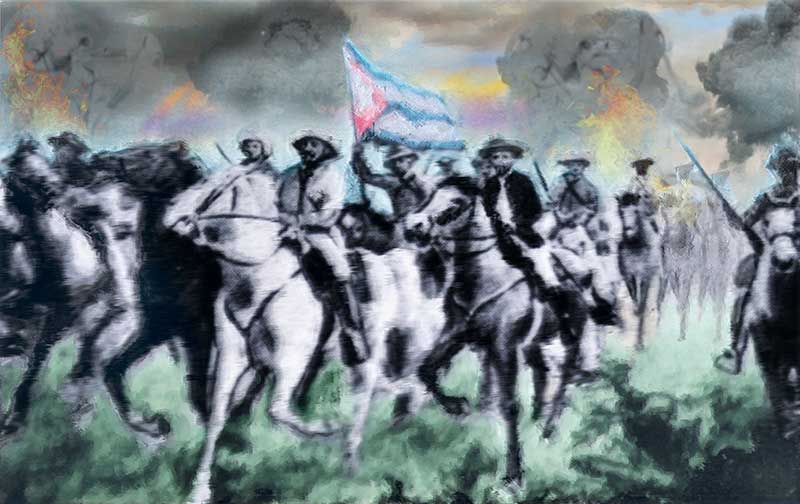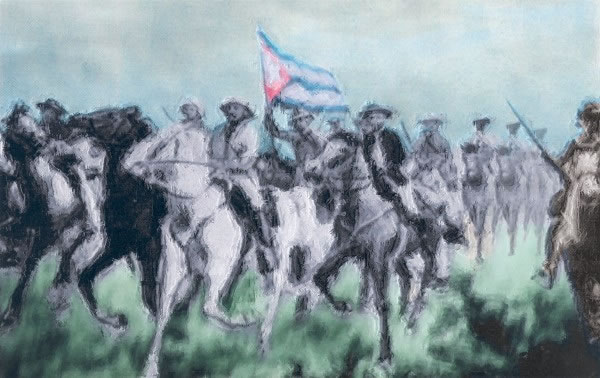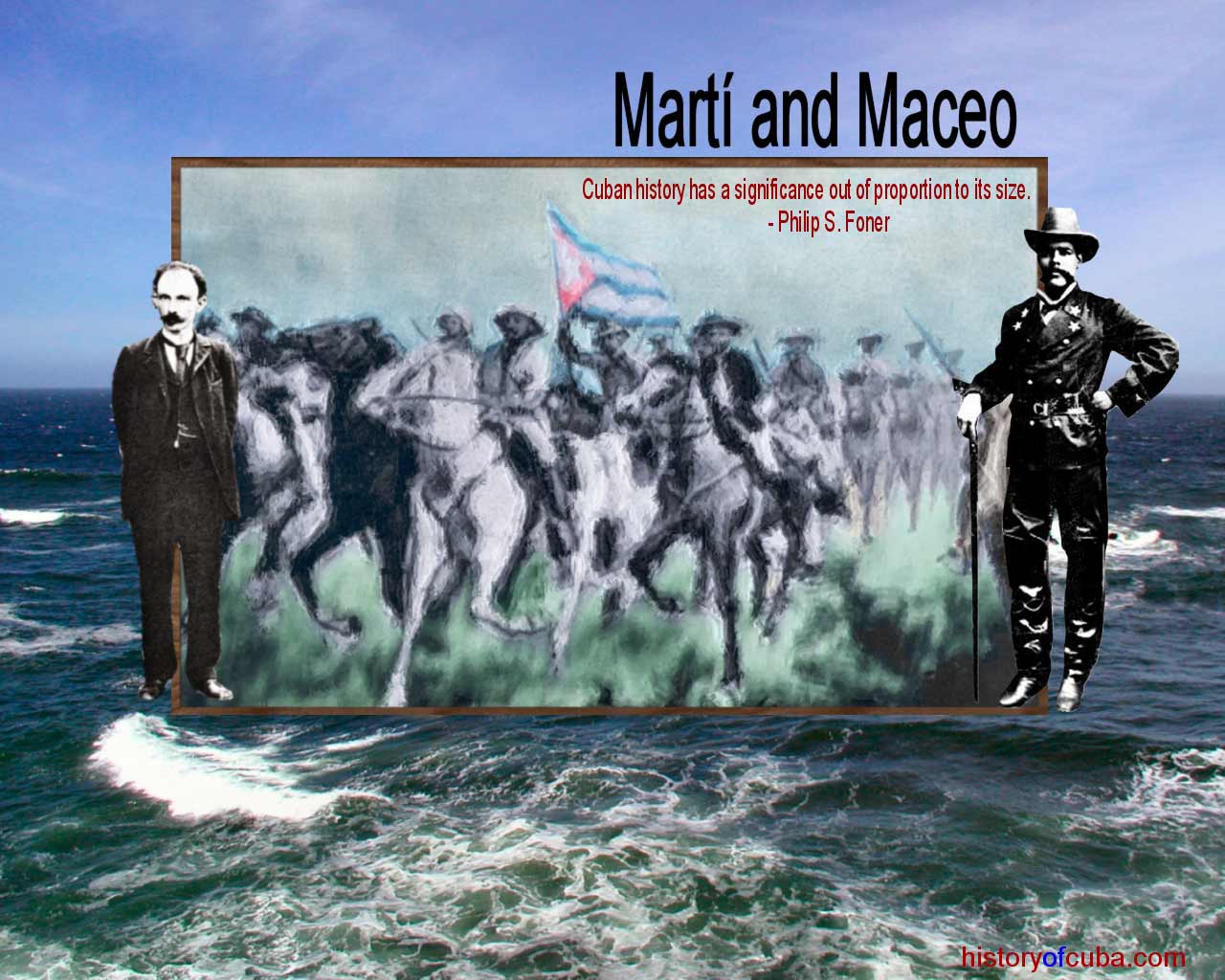


Antonio Maceo is leading the charge, with Máximo Gómez next to him, and Panchito (Máximo’s son) carrying the Cuban flag. Is there a more glorious moment in the island’s history?

The date is January 1, 1896.
The Spanish army thought they had turned the Cuban rebels back at Coliseo. On December 23 1895, Antonio Maceo’s troops suffered serious losses in their struggle for Cuban independence. The Cubans had many casualties, and Maceo’s horse was killed as he rode in battle. But the Mambises would not give up their goal to bring the war to Havana.
General Martínez Campos and the Spanish Army thought they had turned them back, and they celebrated with glee and nervous fear. They didn’t know they had inspired the Mambises into one of their most famous maneuvers, now remembered as the “false retreat.” As the name implies, the rebels seemed to be retreating, but instead they made a half-circle through Las Villas and continued into Havana, destroying sugar plantations, railroad stations and anything else that stood in their way.
On January 1 1896, newspapers in Havana ran headlines announcing that Spanish troops had turned back rebel forces. Some predicted that the Mambises were halfway to Camagüey by now after a great victory by the Spanish Empire.
But on that day the Mambises rode into Havana, leaving a trail of fire and destruction behind them. Their success led to the resignation of Spanish Captain General Martínez Campos.
A great victory for the Cubans and a year to remember. The Western Invasion by the Cuban rebels is considered one of the great military feats of the 19th century. After a year of zigzagging around Havana and Pínar Del Rio pursued by larger, better equipped Spanish forces, Maceo and Panchito Gómez (carrying the flag) were killed in battle at Punta Brava.
